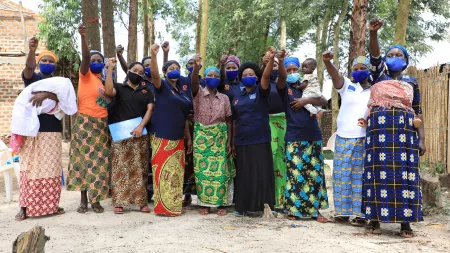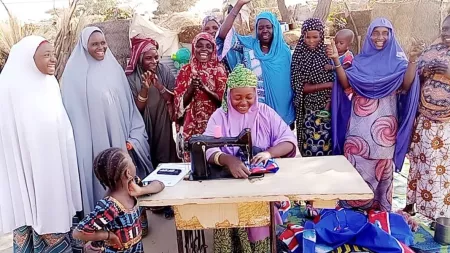Ending gender-based violence in crisis settings
During times of crisis, the prevalence of gender-based violence (GBV) increases due to the multiple risk factors created by emergencies as well as the ways in which existing gender inequalities are exacerbated by the stress and tensions within households, communities, and society.
Potential types of GBV in emergencies may include:
- Increased levels of intimate partner violence (IPV)
- Marital sexual abuse
- Physical and emotional violence
- Rape as a tactic of war
- Sexual assault
- Exploitation during displacement
- Girls being married off by households that do not have the resources to support them or a means to protect their and/or their family’s ‘honor’
GBV can also emerge as a result of the humanitarian response, including sexual exploitation and abuse by local, national, and international aid workers, peacekeepers, and security forces.
Preventing and responding to GBV in emergencies (GBViE) is a life-saving activity that requires a prioritized response and is mandatory in CARE programming.
What is CARE doing to address gender-based violence during crises?
CARE International has defined six programming priorities that make up its framework to address GBViE:
- Ensure the routine inclusion, resourcing, and monitoring of GBV risk mitigation measures across all programming.
- Work with communities to shift patriarchal social norms and address the root causes, exacerbating factors, and impacts of GBV in crises contexts.
- Create and manage safe spaces for women and girls.
- Provide appropriate gender and age-sensitive sexual and reproductive health in emergency services including, where possible, the clinical management of rape.
- Engage men and boys to prevent and address GBV in their communities.
- Inform learning, adaptation and scale-up of CARE’s work and advocacy to influence changes in sector-wide humanitarian processes, practices, policies, and programming in ways that address GBViE.
CARE International prioritizes the leadership of women and girls, as part of our Women’s Leadership in Emergencies programming. For example, when members of a women’s group in Uganda adapted their business to make face masks, CARE International purchased the masks and distributed them to others who needed them.
Since 2017, CARE International has also implemented GBV prevention and response interventions that leverage health services as entry points to offer family planning and integrated care services specifically for GBV survivors. As of 2021, around 200,000 men and women have received GBV services and information.


